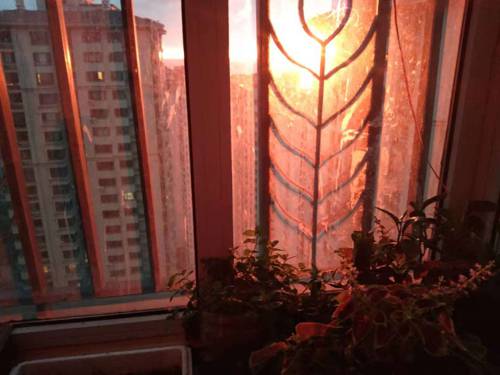
FAQ About Indoor Plant Balcony Garden Setup

What are the best indoor plants to grow on a balcony?
The best indoor plants for a balcony garden are those that can thrive in varying light conditions and are suitable for container planting. Popular choices include succulents and cacti, which require minimal water and can handle sunlight well. Ferns, spider plants, and peace lilies are great options for areas with indirect light. Herbs like basil, mint, and rosemary can also be a good addition due to their compact size and utility.

How do I manage the climate conditions for my balcony garden?
Managing climate conditions involves understanding both the indoor climate and the microclimate of your balcony. Consider the amount of sunlight your balcony receives, and choose plants accordingly. For hotter climates, provide shade using parasols or shade cloth. In cooler temperatures, use insulated pots or bring plants indoors during cold spells. A modest humidity tray or regular misting can benefit plants in dry climates.

What types of containers are best for a balcony garden?
Choose containers that are appropriate for the plant species and conducive to growth. Clay or terracotta pots are ideal for plants that require good drainage, while plastic pots retain moisture longer, making them suitable for plants requiring more consistent hydration. Additionally, consider using hanging baskets or vertical planter systems to optimize space on smaller balconies.

How much sunlight is needed for a balcony garden?
The amount of sunlight required depends on the type of plants chosen. Most flowering plants and vegetables need at least 6-8 hours of full sun daily. Plants such as ferns and peace lilies prefer dappled light or partial shade. Assess the direction your balcony faces to determine sunlight intensity and duration throughout the day.

How can I effectively use vertical space on my balcony for gardening?
Maximizing vertical space can significantly enhance your balcony garden. Use vertical shelves, hanging planters, and trellises to allow climbing plants to grow upward. Wall-mounted planters can also be an effective solution for small spaces, allowing you to grow more plants without taking up valuable floor space.

What are some tips for watering plants on a balcony?
Watering needs depend on the plant type, container size, and climate. Generally, it's best to water early in the morning or late afternoon to reduce evaporation. Ensure that pots have adequate drainage to avoid waterlogging. Consider using self-watering pots or a drip irrigation system for more consistent moisture levels, especially during hot periods.

How can I protect my balcony garden from pests?
To protect your plants from pests, implement integrated pest management strategies. Regularly inspect plants for signs of insects or disease. Introduce beneficial insects like ladybugs, use natural insecticidal soaps, or homemade solutions like neem oil. Physical barriers, such as netting, can help keep pests away from vulnerable plants.

What are good plants for reducing air pollution in a balcony garden?
Several indoor plants are effective at purifying air, which is beneficial for a balcony garden. Spider plants, snake plants, and bamboo palms are excellent at absorbing toxins. Peace lilies and philodendrons are also efficient at cleansing the air of certain pollutants.

Which herbs can be grown in a balcony garden for culinary use?
Many herbs thrive in a balcony environment and can be used for cooking. Popular choices include basil, mint, rosemary, thyme, and oregano. These herbs typically require minimal space and can be grown in small containers, making them perfect for urban gardeners with limited space.

How do I fertilize plants in my balcony garden?
Fertilization helps maintain healthy plant growth by providing essential nutrients. Use a balanced liquid fertilizer every 4 to 6 weeks, or consider slow-release granules for longer-term feeding. Organic options such as compost or liquid seaweed can enrich your soil without synthetic chemicals, ensuring a more sustainable gardening practice.

Can I grow vegetables on my balcony?
Yes, many vegetables are well-suited for balcony gardening, provided there is sufficient sunlight and space. Tomatoes, peppers, and lettuces are popular choices as they can thrive in containers. Ensure to use deep pots for root development and provide staking for taller plants to support growth.

What is the best soil mix for balcony garden containers?
The best soil mix for container gardening should be lightweight yet capable of retaining moisture. A general recommendation is a blend of peat moss, perlite, and compost. This mix provides necessary aeration and nutrients. Adjustments can be made for specific plants, such as incorporating more sand for succulents or more organic matter for vegetables.

How do I create a microclimate for my balcony plants?
Creating a microclimate involves adjusting conditions to suit plant needs. Use windbreaks like screens or barriers to reduce wind exposure. Manage sunlight by employing canopies or shade cloths. Use reflective materials to enhance light for low-light areas. Temperature can be moderated with the use of insulation or placement adjustments.

Can I grow tropical plants on my balcony?
Growing tropical plants on a balcony can be successful if their environment closely mimics their natural habitat. Provide ample humidity and warmth, protect from cold drafts, and ensure well-drained soil. Tropical plants such as orchids, bromeliads, and anthuriums thrive under such conditions, especially if the balcony is enclosed or partially shielded.

How can I design a balcony garden to maximize aesthetics and functionality?
To design a beautiful yet functional balcony garden, balance plant aesthetics with practical placement. Use containers of varying heights and colors to add visual interest, and group plants with similar care needs together for convenience. Incorporate decorative elements like fairy lights or small sculptures to enhance the appeal. Functional items such as a small bench or garden table can also blend into the design for relaxation purposes.

What are low-maintenance plants suitable for an indoor balcony garden?
For gardeners who prefer low-maintenance options, choose plants known for their resilience. Snake plants, zz plants, and succulents require minimal care with infrequent watering. Additionally, philodendrons and dracaenas are hardy choices that tolerate a range of light conditions and minimal pruning.

How can I deal with noise from the street on my balcony garden?
Reduce street noise with strategic planting and additional design choices. Use dense foliage plants like bamboo or tall grasses to act as natural sound buffers. Complement this with decorative screens or outdoor rugs which can help dampen sounds. Water features such as a small fountain can provide a soothing sound to counteract urban noises.

What are the benefits of setting up a balcony garden?
Establishing a balcony garden offers multiple benefits, including enhanced air quality and an increase in natural beauty at your residence. It provides an opportunity for homegrown produce, promoting a sustainable lifestyle. Additionally, gardening can be a therapeutic activity that reduces stress and encourages physical activity.

How can I create an all-season balcony garden?
To create an all-season garden, select plants with varying blooming periods, and be prepared to rotate them according to season. Plant evergreens or perennials that retain foliage year-round. Utilize cold-tolerant plants in winter or provide protection such as cloches and frost blankets during colder months. Climate-adaptive containers and portable planters can aid in managing seasonal changes effectively.

Is it possible to use artificial lighting for a balcony garden?
Artificial lighting can supplement natural light for a balcony garden, especially if the area receives insufficient sunlight. LED grow lights are energy-efficient and customizable, offering different spectrum ranges suited to various plant types. Position lights to ensure even distribution and avoid overheating plants by using lights that emit minimal heat.
